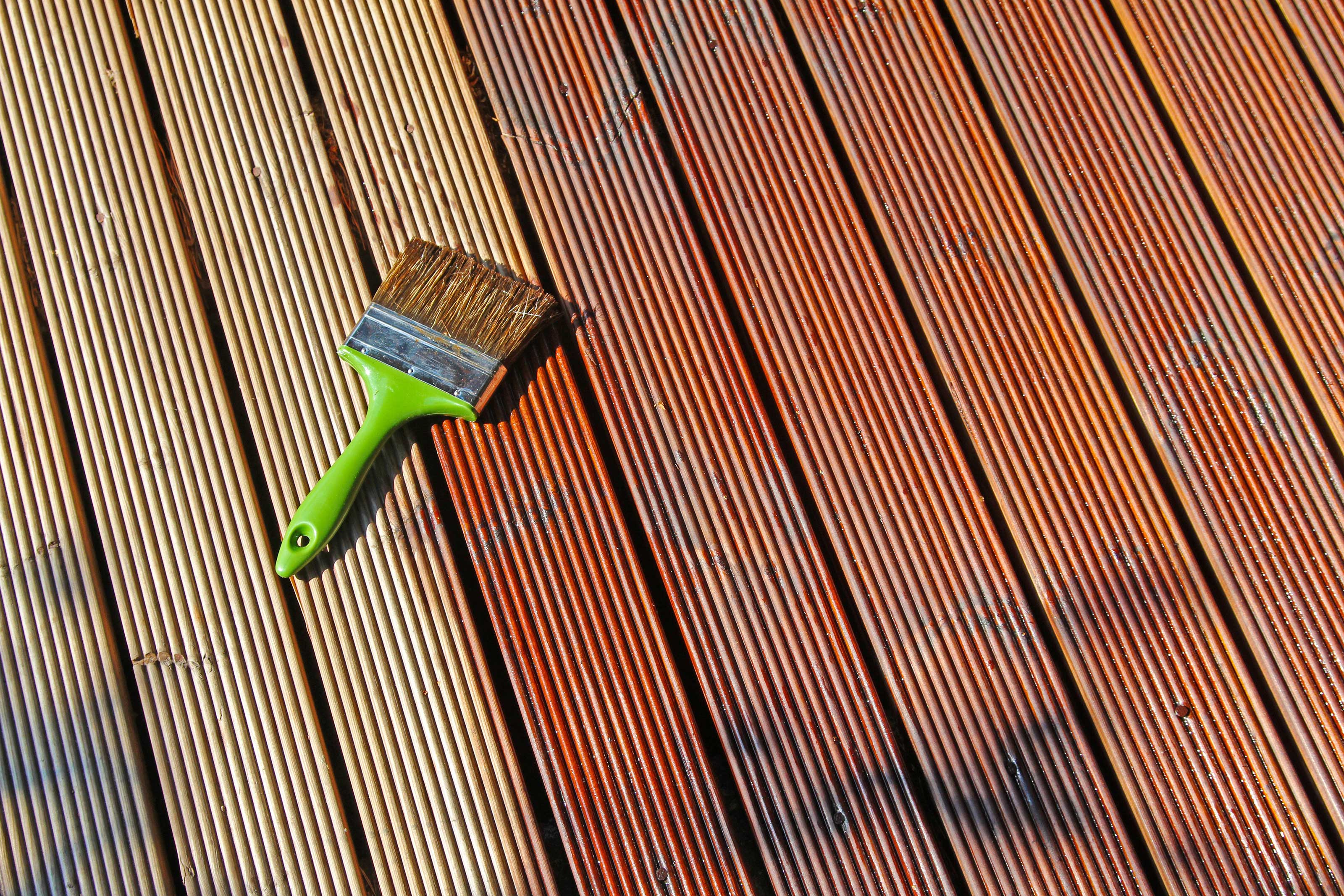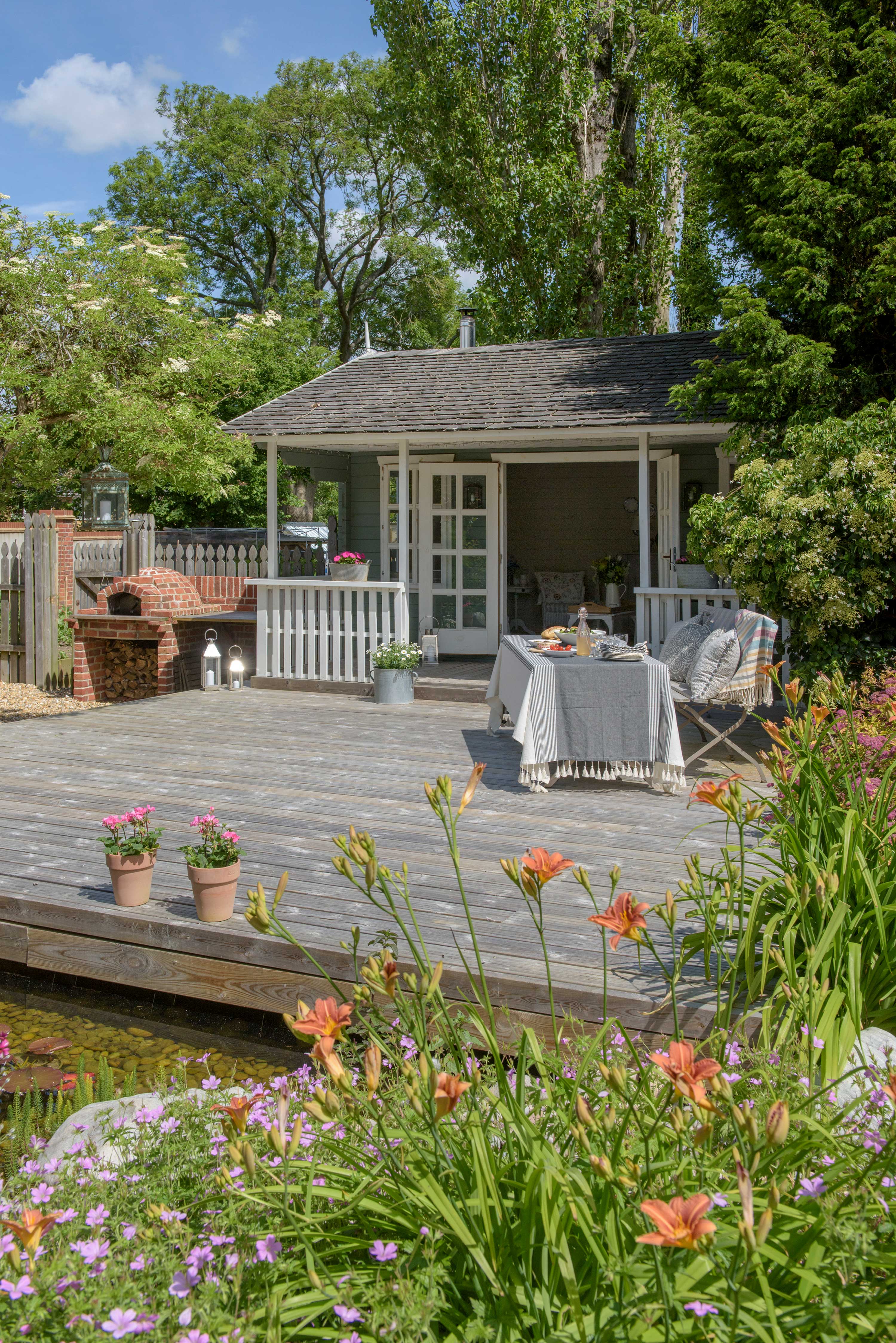6 slippery deck solutions: how to stop decking from being slippery
Need some slippery deck solutions to make your timber or composite surface more stable? Keep your space safe with our advice


If you need slippery deck solutions, you've come to the right place. You'll be pleased to know that whether you have timber or composite flooring installed in your garden, there are lots of simple ways to ensure that it won't send you and your guests flying.
Decking ideas are fantastic additions to any plot. They offer a chic and stable base for outdoor furniture, help to zone a space, and can introduce new and interesting levels. But, after a while, they have a tendency to get a little precarious underfoot. This is especially the case in rainy or colder weather. Of course, this isn't ideal under any circumstances and can lead to all kinds of mishaps. Yes, you want to be head-over-heels for your outdoor living space, but not in the literal sense!
With help from the experts, we've brought together some top tips on how to stop a deck from being slippery, so you can enjoy your space year-round with peace of mind.
6 slippery deck solutions:
1. Keep it clean

Want to know how to stop a deck from being slippery? One of the best ways is simply to keep it clean
It might seem the most obvious, but one of the best slippery deck solutions is to keep it clean. A build-up of moss, algae and grime can become hazardous to walk on, so be sure to keep on top of maintenance. This includes a regular sweep up of detritus, as well as clearing out the gaps. Doing so encourages rainwater to drain away rather than pool, which reduces the growth of algae.
At least once a year, give it a good wash with a commercial deck cleaner, good ol' soapy water, or even with the best pressure washer. Our guide on how to clean decking is full of step-by-step advice.
2. Paint on a non-slip coating

Non-slip paints and oils can be effective in keeping your deck safe
If your decking still feels a little dangerous even after you've given it a good clean, then a non-slip coating might be the way to go. You can buy stains made especially for this purpose, which will enhance the look of your deck as well as provide tons more grip.
They generally work by the inclusion of microbeads and tend to be more durable than non-slip paint (which is also available). Plus, 'most anti-slip decking stains contain biocide agents,' adds Gena Lorainne of Fantastic Services, 'meaning they prevent the growth of potential slippery organic matter.'
The Cuprinol team explains that 2.5 liters of their anti-slip decking stain covers up to 20 square meters with two coats on bare or previously stained wood. However, absorbent wood, rough sawn wood and grooved decking will reduce coverage, they add, meaning you will probably need more. Pick a dry day and remember to apply it by working along the grain of the wood.
And whilst you've got your brushes handy, why not find out how to paint a shed, too?
3. Add grip strips
Grip strips have a gritted surface and are a highly practical and low-maintenance solution if you need to know how to stop a deck from being slippery. You can buy them in hardware stores or online for an affordable price. Then all you need to do is screw them into place.
Opt for ones that are fungal resistant – some claim to last up to ten years. Although there are more subtle shades available which can help them blend with their surroundings, laying them across your entire decking might not be quite the aesthetic you're after. However, you could always just add them to a specific, traffic-heavy area, such as outside a door or at the top of garden steps ideas.
4. Opt for a textured deck

A grooved deck adds extra grip, as seen in this set-up from Cuprinol
If your deck is looking ropey, rotten and beyond repair, then it's probably time for an update. This gives you the opportunity to take precautionary measures against a slippery deck right from the get-go, as you can choose one that's textured as opposed to smooth.
You want to provide traction, so whether you go for timber or composite styles, look for relief-surface decking. As the garden experts at Fantastic Services say, 'Some of the popular designs include boards with a grooved-channel or deep wood-grain texture.'
However, there is one big 'but' with this tip. Although textured decking allows greater grip straightaway, it can be more prone to algae build-up than smooth decking. So, to maintain its anti-slip effectiveness, it's important to keep on top of the cleaning.
5. Think about the direction that you lay your deck

Lay your decking the opposite way to foot traffic
Which way are you most likely to walk across your deck? Consider this first, before you have it installed, as the team at Fantastic Services suggests to lay the decking in the opposite direction. 'This way, the gaps between them will provide you with relative resistance to slips and falls,' they say.
If you're tackling the project yourself, then our guide on how to build decking is a good place to start.
6. Add a cover

Adding a veranda or awning to your decking will keep it protected from the elements for longer
Covered deck ideas are one of the most stylish slippery deck solutions. Depending on their size, they can help to protect the surface of your decking from the elements, making it less prone to pooling water, algae, and a build-up of fallen leaves.
Of course, you need to ensure that your decking cover of choice is one that can withstand the colder seasons for this to work best, and you'll still need to keep on top of cleaning. But, it will certainly help matters.
Try awning ideas, sturdy pergolas, or even verandas. It'll help keep your garden furniture ideas sheltered and in good condition too. Our guide on how to clean outdoor furniture has all the tips you need when it's time to give it a spruce.
Can you add sand to paint to make it non-slip?

A non-slip deck is a must, especially if you love to entertain outdoors
Adding sand to paint is a known DIY hack and a budget-friendly alternative to buying special non-slip treatments. If you're on the lookout for cheap garden ideas as well as slippery deck solutions then it's definitely worth a go.
To try it yourself, ensure that your decking is clean, dry, and sanded down first, and then mix four parts exterior paint to one part fine-grained silica sand in a tray. Stir well before loading up your brush or roller, and keep stirring the mix as you complete the project. Once the first layer is dry, apply another layer – this time without the sand. This will help to disguise the sand's appearance.
Before you cover your entire deck with this method, it's always best to try a patch test first in a small and inconspicuous area. Leave it to fully dry to check that you're happy with the finished look before proceeding.

The garden was always a big part of Holly's life growing up, as was the surrounding New Forest where she lived. Her appreciation for the great outdoors has only grown since then. She's been an allotment keeper, a professional gardener, and a botanical illustrator – plants are her passion.
